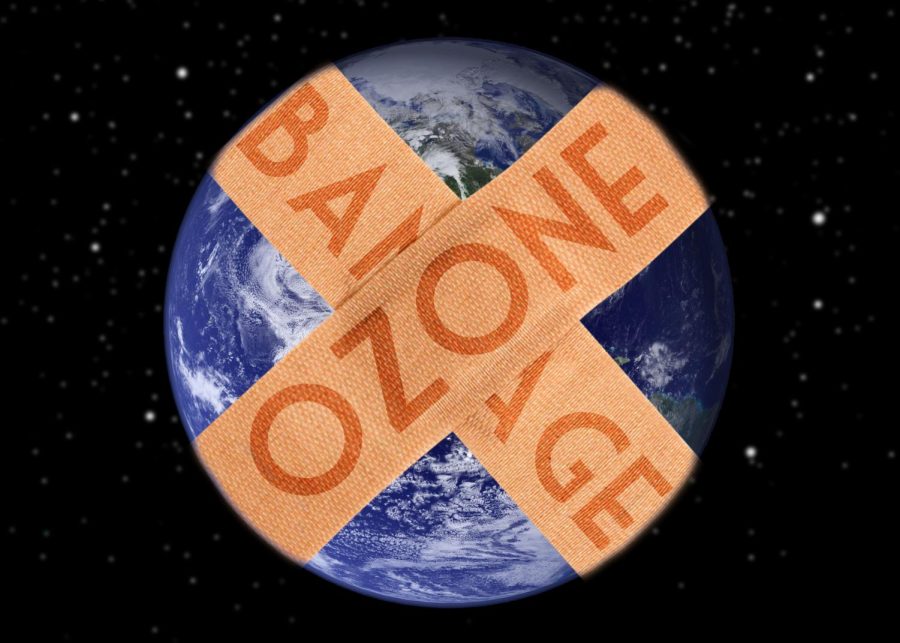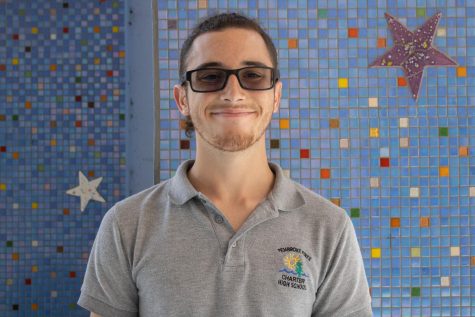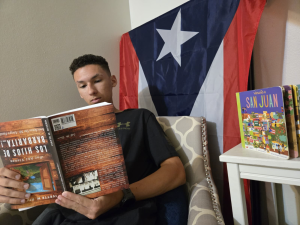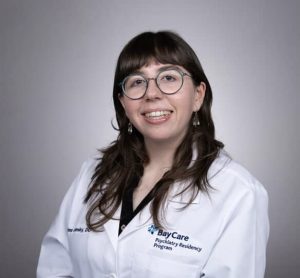From Nozone to Ozone: We Aren’t Melting as Fast Anymore
January 27, 2023
In unexpectedly positive news for our rocky planet, Earth’s ozone layer—the region resting in the upper stratosphere—is on track for a slow, but steady recovery (CNBC).
“The ozone layer is essentially a layer of Earth’s atmosphere that shields our planet from dangerous ultraviolet rays produced by the Sun,” says junior Gavin Poore, Environmental Club President. “This layer absorbs these rays, and as a result, prevents the exposure of harmful radiation to humans.”
Since 1980, a sizable hole in the ozone layer has been forming above certain areas on Earth due to heavy fossil fuel consumption and other effects of global industry. “The ozone layer has “shrunk,” Gavin explains. “When gasses and emissions are released into the atmosphere, they slowly deplete the ozone layer and reduce the shield that protects us everyday. Human exposure to radiation can cause skin diseases and forms of cancer [as well as] stunt and permanently damage plants and crops, which in turn affect food chains and entire ecosystems.”
Seven years later, and in response to these potential impacts, governments came together to introduce the 1987 Montreal Protocol. The international treaty aims to regulate the consumption of man-made chemicals such as chlorofluorocarbons (CFCs) and other ozone-depleting substances. “The ban on ozone-depleting chemicals is crucial for our ozone layer and therefore our environment,” says sophomore and Environmental Club Parliamentarian, Sarah Iturralde.
According to a scientific assessment published every four years, the use of CFCs has decreased by 99% since the agreement’s launch. If the treaty remains in place, the ozone layer is expected to heal to 1980 levels (before the detection of an ozone hole) by around 2066 over the Antarctic region, by 2045 over the Arctic, and by 2040 for the rest of the world. “This is good news for the future of our climate,” Iturralde notes. “It shows that governments can in fact work together to solve environmental issues; it gives the people hope for a cleaner future and inspires climate change advocates to further challenge their leaders.”
A cleaner future was in the minds of Science National Honor Society (SNHS) members when the club decided to protect Charter’s own habitat last Tuesday—the school. The club organized a school-wide cleanup, having members collect trash from anything to gum wrappers and water bottles to leftover cafeteria lunches. “SNHS did the cleanup because we simply want to help out the environment,” says club member and sophomore, Fabrizio Cioffi. “The first thing that came to mind was to clean up trash in the area. It helps to reduce toxic waste that would end up in the atmosphere little by little.”
Solid waste does in fact contribute to global climate change. Greenhouse gasses like methane and nitrous oxide are generated when trash decays in landfills or when it’s processed in combustion facilities. That’s why junior Sonia Ally thinks, “doing little things always make a big difference and…paying attention to detail is so important. Yes, we have janitors, but as students we should all take pride in where we learn and look after it by cleaning up,” she says.
“It might start with just a few [pieces of trash] being picked up to the whole world agreeing to improve the Earth’s ozone layer. I feel good because [although] I know the Earth is worsening by the year, these little things are what make big things happen,” Fabrizio agrees. “[The cleanup] should set an example to the underclassmen and those to come, showing them that our school is an important place, and we shouldn’t fall behind in keeping up after it,” Sonia says.
Sonia speaks words analogous to the planet’s current situation: students are to schools as humans are to the world. Perhaps today’s people are setting an example for generations to come, showing them that taking action does lead to productive progress, even when it comes to dire situations that so adversely affect the rock we call home.
The recovering ozone layer is just the beginning.








